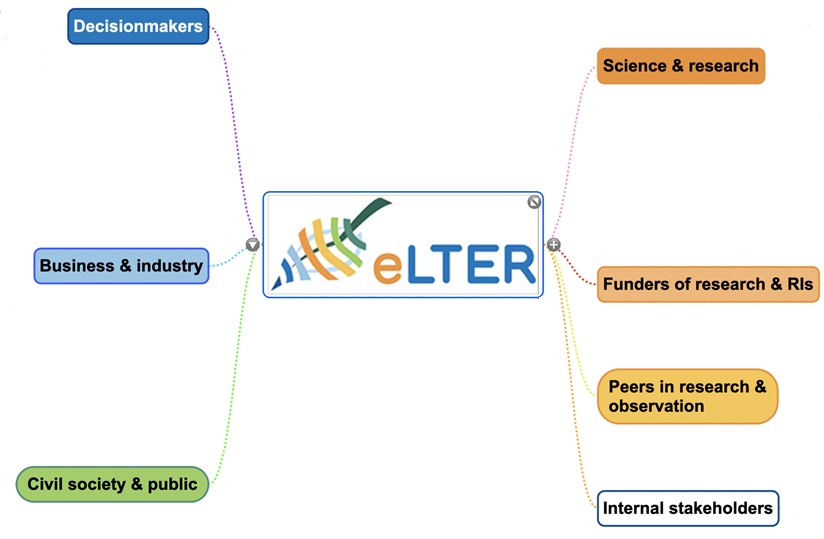Who’s who: Mapping the eLTER stakeholders
14 July 2021
Following a comprehensive working process eLTER completed a stakeholder assessment identifying six external and one internal stakeholder categories with over 30 groups. The starting point for this mapping exercise was the preliminary stakeholder analysis for the ESFRI application. The initial picture was further developed by several workshops and reflections with internal and external participants. A focus was put on the future eLTER RI coordination and their links to European and national level organisations, representing the key stakeholder communities of researchers, research infrastructure funders and decision makers. Finally, a detailed questionnaire was completed by 40 diverse representatives of eLTER.
The responses to the questionnaire reflected the possible variation in perspective, role and expectations of eLTER. It was possible to examine issues of common interest across stakeholder groups.
The relevant stakeholder groups for the future RI are as follows:
- Funders of research and RIs: national, European and international funding organisations critical to the financing and sustainability of the research infrastructures;
- Science and researchers: individual scientists, research performing organisations, research networks, pertinent science initiatives at international levels that show interest in the services provided by the RI;
- Decision-makers: European policy makers, European agencies (e.g. EEA, JRC and organisations contributing to monitoring of the EU Nature Directives), national and regional authorities and policy makers, global agencies and intergovernmental organisations;
- Business and industry: companies that use the services of the eLTER RI, enable innovation and cooperation in terms of observation or information management, as well as environmental impact assessment consultants and spatial planners and architects;
- Civil society and public: Citizen Science organisations, environmental NGOs, land and forest owners' organisations, the wider public;
- Peers in research and observation: monitoring and observation networks and organizations in-situ and remote (e.g. UNECE-Working Group on Effects, WMO, JRC, ESA/Copernicus, EIONET), research infrastructures in the environmental domain, European scale e-infrastructures (e.g. LifeWatch) and other pertinent projects and initiatives contributing to EOSC;
- Internal stakeholders: Site and platform coordinators (SPC), Site and platform operating institutions or National LTER networks coordination teams (NC).
The implementation of the survey parallel to service development, strategic planning and communication processes allowed the grouping to be integrated into relevant strategies and plans, such as the eLTER RI Strategic Plan, the eLTER Communication strategy, the eLTER Services portfolio and others. eLTER is in the process of defining services in accordance with the stakeholder mapping (e.g. FAIR data, site access, science synthesis & training services), identifying specific functional clusters of stakeholders, compiling an inventory of names and contacts, and establishing a relationship with them. The results of this stakeholder mapping are the basis for a coherent stakeholder engagement strategy and the integration of coordinated approaches and actions across the eLTER PPP and PLUS work plans.
Boris Barov (Pensoft)
